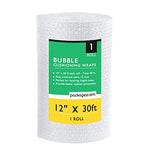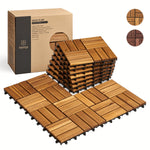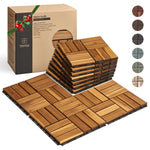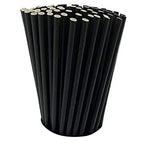You have no items in your shopping cart.
In today's fast-paced world, sustainability has become a paramount concern for many individuals. People are actively seeking eco-friendly alternatives in various aspects of their lives, including personal care routines. One such innovation that has gained significant popularity is the reusable razor. This article delves into the world of reusable razors, exploring their benefits, types, usage tips, and much more. Whether you're a seasoned eco-warrior or just beginning your sustainability journey, this comprehensive guide will equip you with all the knowledge you need to make the switch to a reusable razor.
Table of Contents
- The Rise of Reusable Razors
- The Environmental Impact of Disposable Razors
- The Birth of Reusable Razors
- Why Choose a Reusable Razor?
- Types of Reusable Razors
- Safety Razors
- Cartridge Razors
- Straight Razors
- Electric Razors
- How Do Reusable Razors Work?
- Anatomy of a Reusable Razor
- Blade Replacement
- The Benefits of Using Reusable Razors
- Environmental Benefits
- Cost Savings
- Quality Shave
- Choosing the Right Reusable Razor for You
- Factors to Consider
- Safety Razor Buying Guide
- Cartridge Razor Buying Guide
- Straight Razor Buying Guide
- Electric Razor Buying Guide
- Using a Reusable Razor: Tips for a Smooth Shave
- Preparing Your Skin
- Preparing the Razor
- Shaving Technique
- Aftercare
- Maintaining and Cleaning Your Reusable Razor
- Cleaning a Safety Razor
- Cleaning a Cartridge Razor
- Cleaning a Straight Razor
- Cleaning an Electric Razor
- Common Misconceptions about Reusable Razors
- Reusable Razors and Safety
- Reusable Razors and Ingrown Hairs
- Reusable Razors and Razor Burn
- The Future of Reusable Razors
- Technological Advancements
- Innovative Materials
- Shaving Cream Alternatives
- Frequently Asked Questions (FAQs)
- FAQ 1: Are reusable razors suitable for sensitive skin?
- FAQ 2: Can women use reusable razors?
- FAQ 3: Are reusable razors more prone to rusting?
- FAQ 4: How long do reusable razor blades last?
- FAQ 5: Can I travel with a reusable razor?
- FAQ 6: Are there reusable razors specifically designed for beginners?
- Conclusion
Reusable Razor
A reusable razor is a sustainable alternative to disposable razors. Unlike their single-use counterparts, reusable razors are designed to minimize waste by utilizing replaceable blades. They are typically constructed with durable materials such as stainless steel or high-quality plastic, ensuring longevity and reducing environmental impact. By embracing a reusable razor, individuals can significantly reduce plastic waste and contribute to a more sustainable future.
Types of Reusable Razors
Safety Razors
Safety razors are a popular choice among environmentally conscious shavers. They feature a single, double-edged blade that is enclosed by a protective comb or bar. The design of a safety razor prioritizes safety, making it an excellent option for beginners. Additionally, safety razors offer exceptional precision and control, resulting in a close and comfortable shave.
Cartridge Razors
Cartridge razors, also known as system razors, consist of a handle and a detachable cartridge containing multiple blades. These razors are user-friendly and convenient, allowing for easy blade replacement. Cartridge razors often incorporate additional features such as moisturizing strips and pivoting heads, providing a smooth and effortless shaving experience.
Straight Razors
Straight razors, also called cut-throat razors, are a classic and time-honored choice. These razors feature a sharp, exposed blade that requires skill and practice to master. Straight razors offer unparalleled precision and a close shave, making them a preferred option for traditional wet shaving enthusiasts.
Electric Razors
Electric razors have gained popularity due to their convenience and versatility. These razors utilize oscillating or rotating blades to trim hair, eliminating the need for shaving cream or water. Electric razors are available in both foil and rotary configurations, catering to different preferences and shaving techniques.
How Do Reusable Razors Work?
Reusable razors follow a straightforward mechanism to deliver a clean and smooth shave. Understanding the basic anatomy of a reusable razor and the process of blade replacement is essential for optimal usage.
Anatomy of a Reusable Razor
A typical reusable razor comprises several key components:
-
Handle: The handle provides a grip and control during shaving. It is designed to be ergonomic, ensuring comfort and maneuverability.
-
Head: The head holds the razor blade securely in place and determines the angle at which the blade contacts the skin.
-
Guard or Comb: The guard or comb is a safety feature that prevents the blade from directly contacting the skin, reducing the risk of cuts and nicks.
-
Blade: The blade is the cutting element of the razor. It is usually made of stainless steel and can be easily replaced once it becomes dull.
Blade Replacement
Blade replacement is a crucial aspect of using a reusable razor. As the blade dulls over time, it is necessary to replace it for an optimal shaving experience. The frequency of blade replacement varies depending on factors such as hair thickness, shaving frequency, and personal preference. Generally, blades are replaced every few weeks or when they start to feel less sharp. Proper blade disposal is essential to ensure safety and environmental responsibility. Blades should be stored in a dedicated blade bank or container and disposed of in accordance with local regulations.
The Benefits of Using Reusable Razors
Reusable razors offer a multitude of benefits, making them an attractive choice for those seeking an eco-friendly and cost-effective shaving solution.
Environmental Benefits
Disposable razors contribute significantly to plastic waste, with billions ending up in landfills each year. By switching to a reusable razor, individuals can drastically reduce their ecological footprint. The use of replaceable blades significantly minimizes plastic waste, as only the blade needs to be discarded, while the razor itself can be used for years. This small change in shaving habits can have a substantial positive impact on the environment.
Cost Savings
While the initial cost of a reusable razor may be higher than that of disposable razors, the long-term savings are undeniable. Disposable razors need to be continuously repurchased, creating a recurring expense. In contrast, reusable razors require only blade replacements, which are typically more cost-effective. Over time, these savings can accumulate significantly, benefiting both your wallet and the planet.
Quality Shave
Reusable razors are designed to deliver a superior shaving experience. With a focus on precision and control, these razors provide a close and smooth shave, reducing the chances of irritation and ingrown hairs. The durability of reusable razors ensures that they maintain their performance over an extended period, allowing for consistent and enjoyable shaves.
Choosing the Right Reusable Razor for You
Selecting the most suitable reusable razor depends on various factors, including personal preferences, shaving experience, and skin sensitivity. Understanding the different types of reusable razors and considering essential factors can help guide your decision-making process.
Factors to Consider
-
Shaving Experience: If you are new to wet shaving, safety razors or cartridge razors are recommended due to their user-friendly designs.
-
Skin Sensitivity: Individuals with sensitive skin may prefer safety razors or electric razors, as they provide more control and minimize the risk of irritation.
-
Shaving Technique: Different razors require specific techniques. Straight razors, for example, require skill and practice, making them better suited for experienced shavers.
-
Budget: Consider your budget when selecting a reusable razor. Safety razors and cartridge razors often offer a more affordable option, while straight razors can require a higher initial investment.
-
Maintenance: Assess your willingness to invest time in maintenance. Safety razors and cartridge razors are relatively easy to maintain, while straight razors require regular honing and stropping.
Safety Razor Buying Guide
Safety razors are an excellent choice for beginners and experienced shavers alike. When purchasing a safety razor, consider the following factors:
-
Handle Length and Weight: Choose a handle length and weight that feels comfortable and balanced in your hand. This ensures optimal control and maneuverability.
-
Aggressiveness: Safety razors vary in aggressiveness, which refers to the blade's exposure and angle. Mild razors are suitable for sensitive skin, while more aggressive razors provide a closer shave.
-
Adjustability: Some safety razors offer adjustable settings to customize the blade's exposure. This feature allows you to fine-tune the razor to your specific shaving needs.
-
Quality: Look for safety razors made of high-quality materials such as stainless steel or brass. These materials ensure durability and longevity.
Cartridge Razor Buying Guide
Cartridge razors provide convenience and ease of use. When purchasing a cartridge razor, consider the following factors:
-
Number of Blades: Cartridge razors come with varying numbers of blades. More blades may result in a closer shave but can increase the risk of irritation for those with sensitive skin.
-
Moisturizing Strips: Some cartridge razors feature moisturizing strips that release soothing agents while shaving. These strips can help moisturize the skin and reduce irritation.
-
Pivoting Head: Look for a cartridge razor with a pivoting head, as this feature allows the razor to follow the contours of your face, ensuring a smooth and comfortable shave.
-
Compatibility: Check if the razor is compatible with a wide range of cartridge replacements, ensuring availability and flexibility in the future.
Straight Razor Buying Guide
Straight razors offer a traditional and luxurious shaving experience. When purchasing a straight razor, consider the following factors:
-
Blade Width: Blade width affects the overall shaving experience. Narrower blades offer greater maneuverability, while wider blades provide stability and coverage.
-
Blade Material: Straight razor blades are typically made of high-carbon steel or stainless steel. High-carbon steel offers superior sharpness but requires more maintenance.
-
Handle Material: Straight razor handles can be made of various materials, including wood, plastic, or metal. Choose a handle material that provides a comfortable grip and suits your aesthetic preferences.
-
Point Type: Straight razor blades come in various point types, including round, square, and French. Each point type offers different levels of precision and control.
Electric Razor Buying Guide
Electric razors provide convenience and speed for those with busy lifestyles. When purchasing an electric razor, consider the following factors:
-
Foil vs. Rotary: Foil razors utilize oscillating blades beneath a perforated foil, while rotary razors employ rotating circular blades. Foil razors are generally better suited for those with sensitive skin, while rotary razors are more effective on longer hair.
-
Battery Life and Charging Time: Look for an electric razor with a battery life that suits your needs. Additionally, consider the charging time required for a full charge.
-
Wet and Dry Use: Some electric razors are suitable for both wet and dry use, offering flexibility for those who prefer shaving with or without water.
-
Additional Features: Electric razors may include features such as trimmers, cleaning systems, and LED displays. Assess which additional features are essential for your shaving routine.
Using a Reusable Razor: Tips for a Smooth Shave
Using a reusable razor effectively requires proper technique and preparation. Follow these tips to achieve a smooth and comfortable shave:
Preparing Your Skin
-
Cleanse: Wash your face with warm water and a gentle cleanser to remove any dirt, oil, or product buildup.
-
Exfoliate: Gently exfoliate your skin to remove dead skin cells and lift any ingrown hairs, allowing for a closer shave.
-
Hydrate: Apply a pre-shave oil or moisturizer to soften the hair and provide a protective barrier for your skin.
Preparing the Razor
-
Blade Selection: Ensure you have a sharp and clean blade. Dull blades can lead to tugging and irritation. Replace the blade if necessary.
-
Warm the Razor: Run the razor under warm water or soak it in warm water for a few minutes. This helps to warm the blade and ensure a more comfortable shave.
Shaving Technique
-
Shave with the Grain: Begin shaving in the direction of hair growth (with the grain) to minimize irritation and ingrown hairs.
-
Use Light Pressure: Avoid applying excessive pressure on the razor. Allow the weight of the razor to do the work, gliding gently over the skin.
-
Short Strokes: Use short, controlled strokes to maintain precision and reduce the risk of nicks and cuts.
-
Stretch the Skin: Use your free hand to stretch the skin taut, creating a smooth surface for the razor to glide across.
Aftercare
-
Rinse: Rinse your face with cold water to close the pores and remove any residual shaving cream or debris.
-
Apply Aftershave: Apply a soothing aftershave lotion or balm to hydrate the skin and reduce any post-shave irritation.
-
Clean and Dry the Razor: Rinse the razor thoroughly under running water, ensuring all hair and shaving cream residue is removed. Pat dry with a towel or allow it to air dry.
Maintaining and Cleaning Your Reusable Razor
Proper maintenance and cleaning are crucial for ensuring the longevity and performance of your reusable razor. The specific cleaning method depends on the type of razor you have.
Cleaning a Safety Razor
-
Disassemble the Razor: Carefully unscrew the handle from the head of the razor, removing the blade.
-
Rinse the Components: Rinse the razor head and handle under running water to remove any hair, shaving cream, or soap residue.
-
Clean with a Brush: Use a soft-bristled toothbrush or specialized razor cleaning brush to gently scrub the razor head, removing any buildup or debris.
-
Inspect for Rust: Check for any signs of rust on the razor components. If rust is present, use a mild acid solution, such as white vinegar, to remove it.
-
Dry and Reassemble: Thoroughly dry the razor components with a towel or allow them to air dry. Once dry, reassemble the razor, ensuring it is securely tightened.
Cleaning a Cartridge Razor
-
Rinse the Razor: Rinse the cartridge razor under running water, ensuring all hair and shaving cream residue is removed.
-
Use a Brush: Utilize a soft-bristled toothbrush to gently clean between the blades and remove any trapped debris.
-
Tap the Razor: Gently tap the razor against the sink or a towel to dislodge any stubborn particles.
-
Inspect the Blades: Examine the blades for signs of dullness or damage. If necessary, replace the cartridge with a new one.
-
Dry the Razor: Thoroughly dry the razor with a towel or allow it to air dry before storing.
Cleaning a Straight Razor
-
Rinse the Blade: Rinse the straight razor blade under running water, ensuring all shaving cream and hair residue is removed.
-
Dry the Blade: Use a clean, dry towel to carefully dry the blade, ensuring all moisture is removed to prevent rust.
-
Strop the Blade: After cleaning, strop the blade using a leather strop to maintain sharpness and remove any remaining residue.
-
Apply Blade Oil: Apply a thin layer of blade oil to the straight razor blade to prevent rust and corrosion during storage.
Cleaning an Electric Razor
-
Switch off and Unplug: Before cleaning, switch off the electric razor and unplug it from the power source to ensure safety.
-
Remove the Head/Blades: Depending on the model, detach the shaving head or blades from the razor.
-
Rinse the Blades: Rinse the blades or shaving head under running water, ensuring all hair and debris are removed.
-
Brush the Blades: Use a cleaning brush provided with the electric razor or a soft-bristled toothbrush to gently brush away any remaining particles.
-
Dry the Blades: Pat the blades or shaving head dry with a towel or allow them to air dry completely.
-
Reassemble and Store: Once the blades are dry, reassemble the shaving head onto the razor and store it in a clean and dry location.
Common Misconceptions about Reusable Razors
Despite the numerous advantages of reusable razors, several misconceptions may deter individuals from making the switch. Let's debunk some of these misconceptions:
Reusable Razors and Safety
Misconception: Reusable razors are dangerous and increase the risk of cuts and nicks.
Fact: While it's important to exercise caution when using any type of razor, reusable razors, particularly safety razors, are designed with safety in mind. The guard or comb helps prevent the blade from directly contacting the skin, reducing the risk of cuts. By using proper technique and taking necessary precautions, reusable razors can provide a safe shaving experience.
Reusable Razors and Ingrown Hairs
Misconception: Reusable razors are more likely to cause ingrown hairs.
Fact: Ingrown hairs can occur with any type of razor, regardless of whether it is disposable or reusable. However, proper shaving technique, regular exfoliation, and moisturizing the skin can minimize the likelihood of ingrown hairs. Reusable razors, such as safety razors, can offer better control and precision, reducing the chances of ingrown hairs when used correctly.
Reusable Razors and Razor Burn
Misconception: Reusable razors cause more razor burn compared to disposable razors.
Fact: Razor burn can occur with any shaving method if proper precautions are not taken. Reusable razors, when used with the correct technique and adequate preparation, can actually minimize razor burn. The use of a sharp blade, proper lubrication, and avoiding excessive pressure can help prevent razor burn and irritation.
The Future of Reusable Razors
The world of reusable razors continues to evolve, driven by technological advancements and innovative solutions to enhance the shaving experience while reducing environmental impact.
Technological Advancements
Advancements in technology are revolutionizing the shaving industry. Companies are continuously developing innovative features such as precision sensors, automatic blade cleaning systems, and adjustable settings to cater to individual preferences and optimize performance.
Innovative Materials
The materials used in reusable razors are also evolving. Manufacturers are exploring sustainable alternatives to traditional materials, such as bamboo or recycled plastics, to create razors with reduced environmental impact. These innovative materials not only prioritize sustainability but also maintain the high quality and durability expected from a reusable razor.
Shaving Cream Alternatives
Another area of innovation lies in the development of shaving cream alternatives. Traditional shaving creams often come in single-use plastic packaging. However, companies are now introducing sustainable and packaging-free alternatives, such as shaving soaps and solid shaving bars, that provide a luxurious lather without compromising on performance.
Frequently Asked Questions (FAQs)
FAQ 1: Are reusable razors suitable for sensitive skin?
Yes, reusable razors can be suitable for sensitive skin. Safety razors, in particular, are known for providing a gentle and close shave that minimizes irritation. It's important to use a sharp blade, practice proper technique, and prepare the skin adequately with hydrating products to ensure a comfortable shaving experience.
FAQ 2: Can women use reusable razors?
Absolutely! Reusable razors are suitable for both men and women. Many women have embraced reusable razors as an eco-friendly alternative to disposable razors. The choice of razor depends on personal preference and shaving needs, with options ranging from safety razors to cartridge razors.
FAQ 3: Are reusable razors more prone to rusting?
Reusable razors, especially those made from stainless steel or high-quality materials, are designed to resist rusting. However, it's essential to properly dry the razor after use and store it in a dry location to prevent moisture buildup. Additionally, applying a thin layer of blade oil can provide an extra layer of protection against rust.
FAQ 4: How long do reusable razor blades last?
The longevity of reusable razor blades depends on various factors, including the frequency of shaving, hair thickness, and personal preference. On average, a blade can last for several weeks to a few months before needing replacement. However, it's essential to monitor the blade's sharpness and replace it as soon as it starts to feel dull or tugs at the hair.
FAQ 5: Can I travel with a reusable razor?
Yes, you can travel with a reusable razor. Safety razors and cartridge razors can be disassembled for easy and compact storage. It's important to check airline regulations regarding sharp objects and pack the razor securely in a travel case or protective cover to prevent any accidents or damage.
FAQ 6: Are there reusable razors specifically designed for beginners?
Yes, there are reusable razors specifically designed for beginners. Safety razors with mild or adjustable settings are often recommended for those new to wet shaving. These razors offer a forgiving shave while allowing beginners to develop their technique and confidence gradually.
Conclusion
Making the switch to a reusable razor is a powerful step towards sustainability and a more eco-friendly lifestyle. By reducing plastic waste and enjoying the numerous benefits of reusable razors, individuals can contribute to a greener future while achieving a smooth and comfortable shave. Whether you opt for a safety razor, cartridge razor, straight razor, or electric razor, embracing the reusable razor revolution is a choice that benefits both you and the planet.








